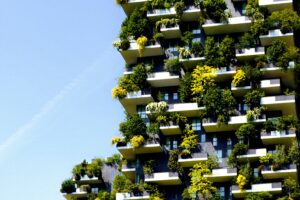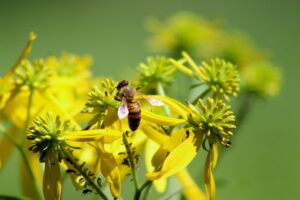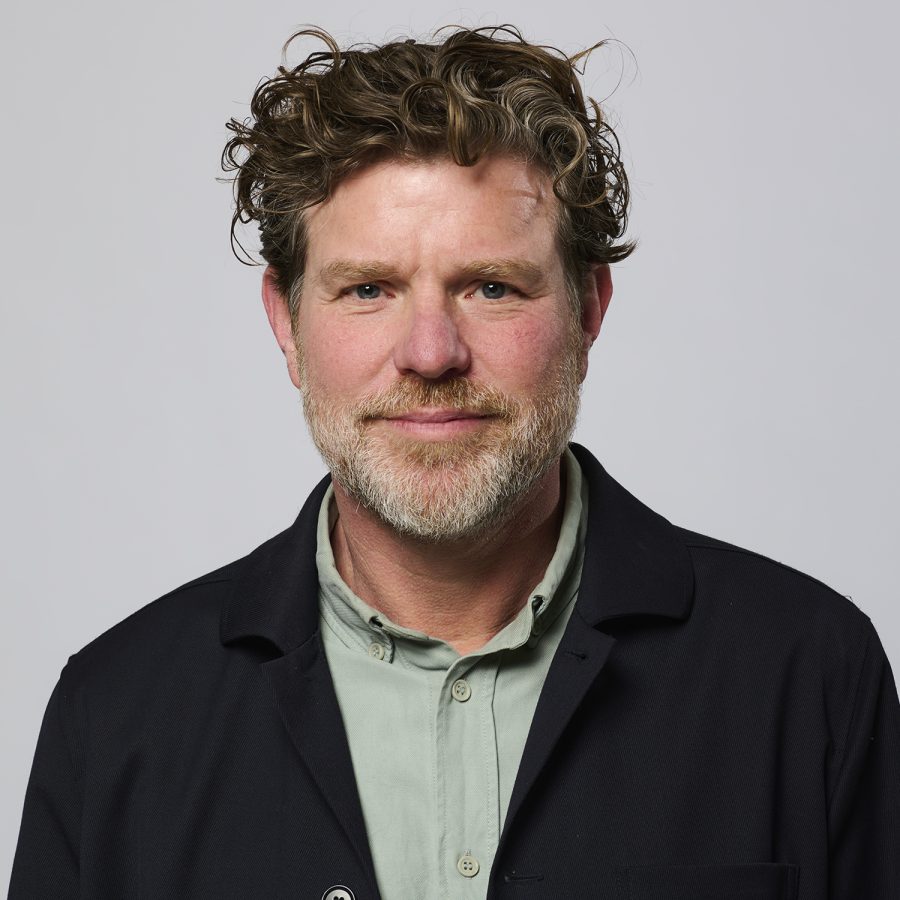‘An eyeopener’: how real estate developments can positively impact biodiversity
nature
‘An eyeopener’: how real estate developments can positively impact biodiversity
Rebel, commissioned by CBRE Investment Management, which invests in real estate on behalf of NN Group, explored where the opportunities lie for more and the right nature. A case study on the real estate development of Westerpark West 2B in Amsterdam shows how enhancing biodiversity can also improve the living experience and reduce costs.
With biodiversity under pressure, real estate investors and other stakeholders are increasingly compelled to consider nature in their investments. New regulations, such as the Nature Restoration Regulation, the CSRD (Corporate Sustainability Reporting Directive) directive, UK BNG (Biodiversity Net Gain) and EU Taxonomy, increase the urgency. ‘There is a buzz in the market: we have to do something about this,’ says Mark Bode from Rebel Flora & Fauna, which makes the benefits of more and the right type of nature clear. ‘Many stakeholders are intrinsically motivated, but want to know what more and the right type of nature yields in business terms.’
A Pilot Project
Commissioned by CBRE Investment Management, which manages NN Group’s real estate portfolio, Rebel investigated how NN could increase biodiversity in its real estate investments. The choice for a pilot fell on Westerpark West 2B in Amsterdam, a quartet of sustainable buildings with mid-market rental housing. Tim Winters, Sustainability Ambassador within portfolio management at CBRE Investment Management: ‘NN Group focuses on Sustainability in the broadest sense of the word. Biodiversity is part of that and there is increasing awareness of its importance.’
Understanding Biodiversity in Real Estate Development

The impact of a real estate development on biodiversity can be significant, Winters notes. ‘You place something physical in an environment that was not originally intended for it. But if you design the space well, you can also make a positive impact.’
Together with ecological consultancy Waardenburg, Rebel conducted field research to map the flora and fauna in the area. The ecologist looked at the native species present in the area before office buildings were erected. Marije Braam, portfolio manager at CBRE Investment Management, initially did not know what to expect: ‘The ecologist will do a count of the different species in the area, I thought. But what results will we see?’ The language spoken by the ecologist and investors is very different, Bode knows. ‘We are in between. Because we look at nature through a financial lens, we can bridge the gap.’ However, the insights from the ecological research quickly proved very valuable, says Braam. ‘You don’t realize how many species are present. And it only takes limited adjustments to ensure they return to our small area.’
“We now know how to better design the gardens within and around the development to attract a diverse range of flora and fauna, particularly the target species designated by Amsterdam.”
– Tim Winters
This can be done by using plants native to the Netherlands, instead of importing species from far away. And a ‘messy’ garden is preferred over a typical, neatly raked area of green. ‘We don’t have to sweep everything perfectly, but can create messy corners. In a forest, the leaves are not always neatly removed either. Nature cleans up itself, but it takes time.’ One of the measures is to leave dead wood lying around to attract insects. The advice to plant fewer, not more trees was a surprise. Braam: ‘With more low ground and hedges, combined with a smaller number of trees, you create layers: more diversity.’
Landscaping is still often seen as a cost item. But the pilot shows how more biodiversity often means lower costs in practice. Braam: ‘Trees are quite expensive. And if you bring species from far away, it incurs transport costs. That more biodiversity does not necessarily have to be more expensive than more traditional solutions was really an eyeopener for us.’
Broader Positive Impacts
 In addition to the ecological benefits, the positive effects of more biodiversity are also visible on other fronts, says Bode of Rebel. ‘Less mowing means more flowers and plants that capture water and reduce heat.’ Rebel calculates the effects of more biodiversity on fine dust, noise, and CO2 emissions, matters that parties like CBRE Investment Management can then report on.
In addition to the ecological benefits, the positive effects of more biodiversity are also visible on other fronts, says Bode of Rebel. ‘Less mowing means more flowers and plants that capture water and reduce heat.’ Rebel calculates the effects of more biodiversity on fine dust, noise, and CO2 emissions, matters that parties like CBRE Investment Management can then report on.
A biodiverse development also requires much lower management costs. Bode cites herb-rich and flower-rich grassland as examples of landscaping that require little maintenance. At Westerpark West 2B, the maintenance manager will not come to mow every week, says Braam of CBRE Investment Management: ‘We have found a good party which takes biodiversity into account and only comes a few times a year. So you can also show real financial results.’
Lessons for Future Real Estate Developments
An important lesson for both Rebel and CBRE Investment Management is that the entire real estate chain is needed to achieve more biodiversity. The earlier nature is considered in the process, the better. Bode: ‘You have to ensure from the beginning with the developer that nature inclusivity is included. Which is not only better for nature but also for your wallet.’
Braam (CBRE Investment Management): “We now know that it is better not to make all the drawings first and then tidy up the outdoor space at the last minute. In the future, we would sit down earlier with other stakeholders such as municipalities and other real estate owners, together with an ecologist. If you have a larger area to create nature, you can also make more impact, and it fits better.”
However, it will not be easy to bring biodiversity to the forefront. Braam: ‘We are often involved late in the process. We sign up for existing plans, and have less influence than you might want. But we now include it when we start a new development: think about biodiversity in addition to ESG or timber construction.’
